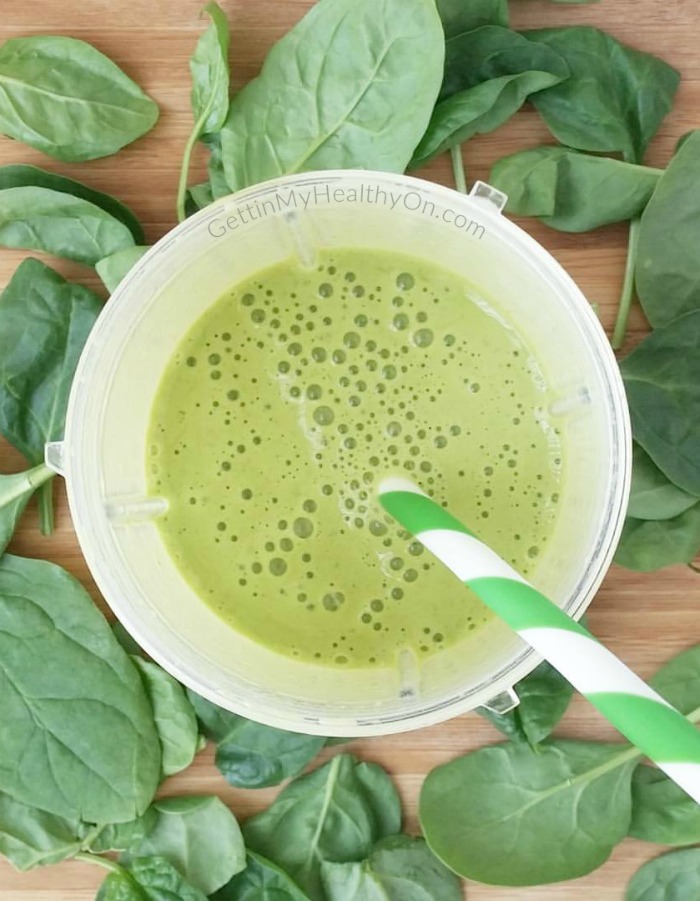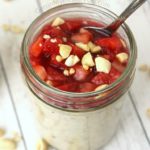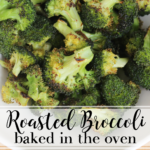Green smoothies have been an extremely popular health food for years. They usually consist of a leafy green (like spinach or kale) to create the vivid color, other fruits and veggies to add more substance to the smoothie, and a liquid (like water or milk) to make it blendable and drinkable. People claim green smoothies offer numerous benefits, from weight loss and clearer skin, to increased energy and improved digestion.

I can’t personally vouch for any life-changing phenomenons from drinking green smoothies, but I still think they’re amazing and highly recommend them to anyone wanting to incorporate more veggies and nutrients into their diet.
I’ve been making green smoothies for almost six years now. My first time ever trying the trend was a version of my Protein Spinach Smoothie (pictured below) that completely blew my mind. I couldn’t get over how something packed with so much spinach could actually taste so GOOD. Since then, I make smoothies with spinach (or another green) more often than not, simply because it’s an effortless way to get in more vitamins and minerals.

Even though I’ve been making them for years, I’m still discovering exciting new ways to create them. For instance, just last week, I learned that I love celery in my smoothies (reminds me of cold-pressed juice) and have taken the plunge and purchased spirulina for future green smoothies (I’m excited/scared). I’ve also played around with matcha green tea powder, which led to my Mango Matcha Smoothie recipe.
In short, there’s an endless number of ways you can make green smoothies, which is why I wanted to give an overview of what I think it takes to concoct the popular beverage that health enthusiasts rave about. Below, I’ve created lists for each component of your smoothie: the green part, ingredients to help mask the taste of the greenery, the liquid to get it all moving in your blender, and any add-on items to help bulk it up.

Pro tip: get a good quality blender that will create extremely smooth smoothies. I’ve had green smoothies with pieces of spinach and kale floating around, and NO THANK YOU. (I don’t want to feel like I’m drinking a salad.) People swear by Vitamix and BlendTec blenders, but I’ve never used either. We own a NutriBullet Sport (affiliate link), and it is hands-down the best blender I’ve ever used (HIGHLY recommend for smoothies).
See below for a bunch of ingredient ideas to help you create the best green smoothie recipe for your own preferences. (I usually include at least one item from each of the four categories.)
Making It Green
- Leafy greens (e.g., spinach, kale, romaine lettuce, arugula, bok choy)
- Other vegetables (e.g., celery, cucumber, broccoli, avocado)
- Herbs (e.g., parsley, mint, basil)
- Nutrient-dense powders (e.g., matcha green tea powder, spirulina)
Masking the Green Taste
- Fruit (e.g., lemon, pineapple, blueberry, apple, banana)
- Nut butters (e.g., peanut butter, almond butter, sunflower seed butter)
Liquids
- Water
- Coconut water
- Milk (e.g., dairy, soy, almond, cashew, coconut)
Other Add-Ins
- Protein (e.g., protein powder, yogurt, nuts, seeds, milk)
- Vegetables (e.g., cauliflower, sweet potato)
- Fruits (e.g., apple, cherries, banana, berries, mangoes, oranges)
- Nuts and seeds (e.g., almonds, chia seeds, flax seed, hemp seeds)
- Miscellaneous (e.g., ginger, spices, oats, quinoa)
As you drink green smoothies more and more often, you gradually get used to the flavors and may find yourself needing less fruit to make it palatable…and may even want to add stronger-tasting veggies.
Good luck as you experiment with different green smoothie combos. I hope you find one you love!
Do you make green smoothies? What’s your favorite recipe?




